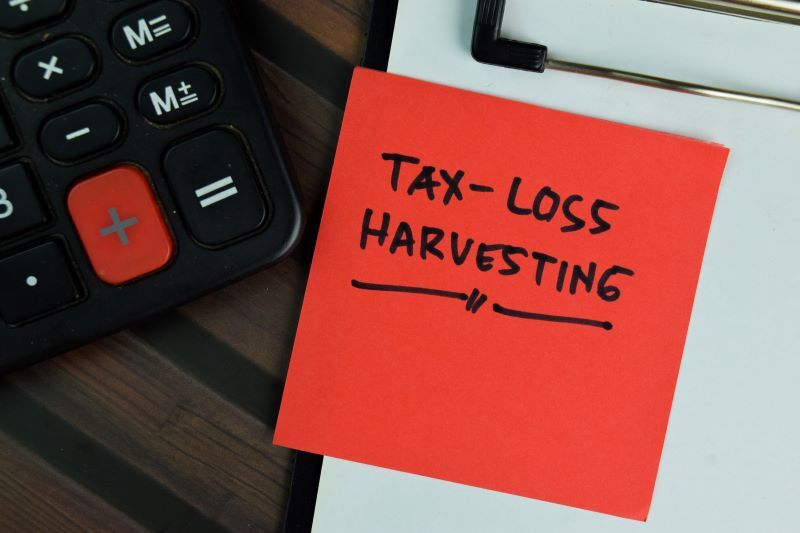The end of 2021 is quickly approaching and a new year is just around the corner. With that in mind, at Rock House Financial, it’s harvest time – tax-loss harvesting, that is.
Tax-loss harvesting can be an effective way to lower your tax bill, reshuffle your investments and ultimately save you money, but it’s not without its pros and cons. Understanding how tax-loss harvesting works can help you decide if it’s the right strategy for you.
As a Certified Financial Planner in Utah, the goal this time of year is to help investors prepare for the new year and take advantage of any year-end strategies available to them. Tax-loss harvesting (and tax planning in general) is one of those strategies.
What Exactly Is Tax Loss Harvesting?
Tax-loss harvesting works as it sounds:
- You “harvest” some of your investments that are experiencing a loss.
- You use those losses to offset some of the taxes you’d pay on your capital gains and potentially reduce your ordinary income.
- You replace the investments you sold with similar-but-different investments so your asset allocation stays the same (this can be tricky).
Tax-loss harvesting doesn’t make sense for everyone, but it may be worth exploring, especially if you were hit with a large capital gains tax bill this year – either because you made a major Roth conversion or have drawn down some of your investment accounts – or simply want to reduce your ordinary income.
What are Capital Gains and Capital Losses?
Capital gains are the taxes you pay on any profits you make from your investments. For example, if you buy XYZ Security for $300 and sell it for $350, you’d pay taxes on the $50 in profit you made.
If you held the security for less than a year, you’d pay short-term capital gains, which would align with your ordinary income tax bracket. So, if you’re in the 32 percent tax bracket, you’d pay 32 percent on your short-term capital gains.
If you held it for a year or longer, you’d pay long-term capital gains. These rates are much lower, at either 0, 15 or 20 percent, depending on your filing status and income for the year.
Capital losses work the same way. If you bought XYZ Security for $300 and sold it for $250, you may be able to “harvest” the loss and use it to offset your gains.
Will tax-loss harvesting help you? Schedule a no-obligation conversation with the Rock House Financial team and start the discussion.
An Example of Tax-Loss Harvesting
Suppose you sell a short-term investment that generates capital gains of $10,000. You then sell another short-term investment that generates $12,000 in capital losses. Because your losses are more than your gains, you could offset the full amount of your gains and pay $0 in taxes on them.
You can then take that $2,000 and use it to reduce your taxable income for the year. If your income tax bracket was 32 percent, you could receive a tax break of up to $640 ($2,000 x 32 percent). You could then take that $640 and invest it in a similar security that fits your asset allocation and risk tolerance.
The Complexities of Tax-Loss Harvesting
While the concept may sound pretty cut-and-dry, tax-loss harvesting can be complicated. There are different rules and regulations you need to be aware of. For example:
You Can’t Harvest Tax-Deferred Accounts
You can’t deduct losses from tax-deferred accounts, such as 401(k)s, 403(b)s, 529s and Traditional IRAs, so there’s no use in using them as part of your tax-loss harvesting strategy. It only applies to regular investment accounts.
You Can Only Claim up to $3,000 in Tax Breaks Per Year
If you’re single or married filing jointly, you can only realize up to $3,000 per year in capital losses. (The limit is $1,500 if you’re married filing separately.) The good news is, if you realize losses over your maximum limit, you can carry them forward into future years.
You Need to Watch Out for the Wash-Sale Rule
The wash-sale rule states you can’t claim a tax loss if you buy the same or a “substantially similar” security within 30 days of selling the original one.
For example, if you sell a mutual fund because you notice it’s nosediving, then turn around and buy a similar mutual fund three weeks later, you’ve violated the wash-sale rule. You won’t get fined for violating it, but you won’t be able to recognize those losses on your tax return (which is the whole point of tax-loss harvesting).
Buying and selling investments can be tricky. When making any kind of change to your portfolio, you want to make sure your investments stay within your risk tolerance and time horizon. With that in mind, as you harvest your losses, the idea is to replace them with investments that are similar in risk, but different enough that they won’t be subject to the wash-sale rule. It’s wise to discuss your situation with a Certified Financial Planner before making any changes to your portfolio, as a seemingly small decision can have a big impact on your finances.
Benefits of Tax Loss Harvesting
Even with all of these rules and regulations, the benefits of tax-loss harvesting can be substantial if it makes sense for your situation.
The biggest benefit of tax-loss harvesting is that it helps lower your tax bill. And, it’s not just for capital gains, either. You can use tax-loss harvesting to reduce taxes on your ordinary income as well. So, if you generate a large tax bill from the sale of your home or simply want to reduce the amount of taxes you owe, tax-loss harvesting could be one strategy that can help.
You’ll typically benefit the most from tax-loss harvesting if you’re in a high tax bracket, since the idea is to lower your immediate tax bill. If you think your income may increase down the road or you’re in a low tax bracket now, it may not be the best strategy for you. Discuss your situation with a Certified Financial Planner to see if it makes sense.
Tax Planning and Other Year-End Opportunities
As we approach the end of 2021, it’s a good time to review your portfolio and talk with a Certified Financial Planner about year-end strategies that may work for you.
At Rock House Financial, we help clients use their investments as a catalyst for reaching their long-term goals. If you’re not currently working with a Certified Financial Planner or feel it may be time to make a change, don’t wait for the new year to start. Contact our team of Certified Financial Planners in Utah today to see what you can do now.
Locally owned and independent, Rock House Financial is a fee-only fiduciary financial advisory firm located in Farmington, Utah. We offer financial planning, investment management and tax planning under one roof to help you minimize financial stress and work toward achieving your goals. Schedule a no-strings-attached conversation to see how we can help.












